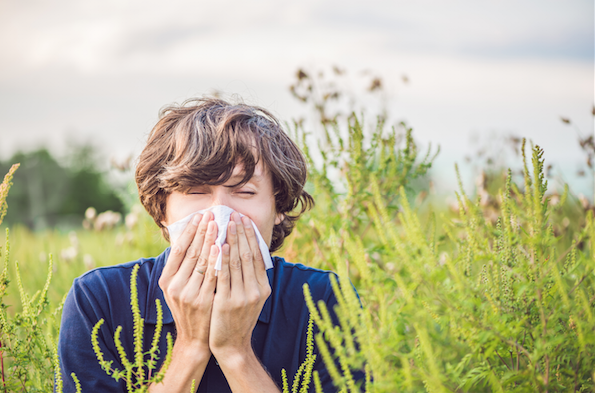
More than 50 million Americans suffer from allergies every year. In particular, springtime allergies are an annual nuisance for many people. As plants begin to bloom and neighbors start to cut their grass more frequently, allergy sufferers nationwide start sniffling and sneezing. What’s more, mold growth blooms both indoors and outdoors, making it almost impossible to escape allergy triggers.
For some, allergy symptoms may consist of sneezing a couple of times a year. But for others, seasonal allergies can cause congestion, a runny, itchy or stuffy nose, watery eyes, headaches and more for weeks or months at a time.
Fortunately, seasonal allergies only occur during certain parts of the year—usually the spring and summer. There are also natural ways to control your allergy symptoms since they are triggered by common allergens like tree pollen, grass, weeds and mold.
Alleviating Seasonal Allergies
Similar to other types of allergies, seasonal allergies develop when your body’s immune system detects and then overreacts to a foreign substance it thinks is harmful. To reduce your allergies, consider the following strategies:
- Wash your bedding every week in hot water to help keep pollen under control.
- Wash your hair before going to bed since pollen can accumulate in your hair.
- Limit the number of throw rugs to reduce dust and mold in your home.
- Wear an inexpensive painter’s mask and gloves when cleaning, vacuuming or painting to limit skin exposure and dust and chemical inhalation.
- Vacuum twice a week.
- Make sure the rugs you have are washable.
- Change air conditioning and heating air filters often.
Treatment for most allergies is available both over-the-counter and by prescription. If your allergy symptoms are severe or chronic, you may need a series of allergy shots. Contact your doctor or allergist to determine which seasonal allergy treatment option is best for you.
Mediterranean Diet Named Best Diet Again
| Makes: 4 servings
Ingredients 1 tsp. olive oil ½ cup sweet onion (sliced) 1 garlic clove (finely chopped) 3 small new potatoes (quartered) ¾ cup carrot (sliced) ¾ cup asparagus pieces ¾ cup sugar snap peas or green beans ½ cup radishes (quartered) ¼ tsp. salt ¼ tsp. black pepper ½ tsp. dried dill
Preparations 1) Heat the oil in a skillet. Cook the onion for two minutes, add the garlic and cook another minute. 2) Stir in the potatoes and carrots. Cover and turn the heat to low. Cook until almost tender, about four minutes. 3) If the vegetables start to brown, add 1-2 Tbsp. of water. 4) Add the asparagus, peas, radishes, salt, black pepper and dill. Cook, stirring often, until just tender for about four minutes more. 5) Serve immediately.
Nutritional Information (per serving)
Source: MyPlate |
The Mediterranean diet topped U.S. News & World Report’s best diet list for the fifth year in a row. The publication’s health experts also voted it the best diet for healthy eating, easiest diet to follow, best heart-healthy diet, best plant-based diet and best diet for diabetes. The Mediterranean diet is an eating pattern that emulates how people in the Mediterranean region have traditionally eaten, focusing on foods like whole grains and heart-healthy fats.
The Mediterranean diet may help support brain function, promote heart health and regulate blood sugar levels. Research suggests that this well-balanced eating plan can also help prevent some chronic diseases and increase longevity. Although there are no concrete rules for following the Mediterranean diet, check out the infographic below for diet guidelines.
If you have any questions about your diet, talk to your doctor.
Walking for a Longer Life
A new study found that if most people—particularly adults over 40—were active just 10 minutes more a day, it could save more than 110,000 American lives each year. Researchers noticed no difference in benefits based on race or sex. Not surprisingly, the study further noted that an increase of 20 or 30 minutes could lead to even more lives saved.
The study’s projections are based on an additional 10 minutes of moderate to vigorous physical activity. Such activities include bicycling, brisk walking, dancing, heavy yard work or gardening, weight training and yoga.
Health experts recommend walking outside or on a treadmill as one of the best and simplest ways to bring consistent physical activity into your life. Any movement can add up during the day, so find what works best for your schedule and lifestyle. Always remember to check with your doctor before beginning any new exercise program. Read More















